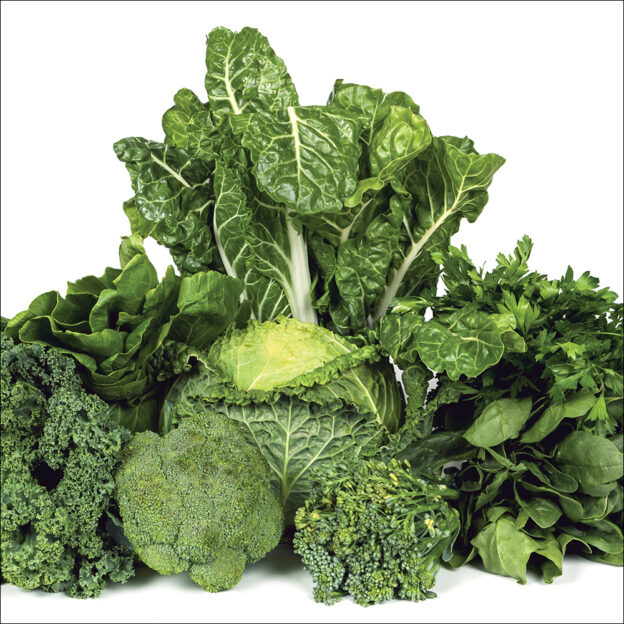Table of Contents
By Paula Grainger

Your body is amazing. Every moment of every day is performing an intricate balancing act to keep you alive and functioning at your best—all without any conscious effort from you!
Structures deep inside your brain constantly monitor everything within your body, from temperature to blood sugar balance and levels of carbon dioxide in your lungs, and respond as needed to maintain optimum health and performance levels. The maintenance of this balance is known as homeostasis—a “dynamic equilibrium” of constant tiny adjustments made to maintain stability. It is governed by the hypothalamus, a structure found in the brain of all vertebrates that controls the non-voluntary functions in our bodies, via hormones. In humans, the hypothalamus is roughly the size of an almond.
The hypothalamus links our brain (neuro) to the hormone-producing (endocrine) glands to make up the neuroendocrine system. The hormones act as messengers delivering instructions from the brain to the body, and control many aspects of life, from waking and sleeping to heart rate, blood pressure, appetite, body temperature, memory, emotions—even sexual desire, and the bond a mother feels with her baby.
The Stress Response
The neuroendocrine system keeps us safe by identifying and reacting to danger. This is the famous “fight-or-flight” response, which occurs when the sympathetic nervous system (SNS) takes over and triggers the release of hormones that cause dramatic physical and emotional responses that are appropriate to the increased level of danger. If you were a mouse surprised by a hungry cat, a sudden cascade of stress hormones from the SNS could save your life.
If you were lucky enough to escape, your parasympathetic nervous system (PNS) takes over a short time later, when you are recovering, lowering your heart rate and restoring your body systems to normal. This brings about a relaxed, balanced state that is sometimes referred to as “rest and digest”, in which the feelings of stress and urgency recede. (If you were not so lucky, then you are inside a cat, and stress is the least of your problems!)
But what happens if those feelings of stress and urgency don’t subside? It is no secret that modern life is stressful. The nervous system is governed by the brain, and the thoughts and emotions you have are inextricably linked to the physiological processes taking place in your body. If your body and mind are frequently in stress mode, it can upset the delicate balance of homeostasis, leading to ill health.
Many of us spend our lives in an almost constant state of fight or flight, with our minds on high alert, priming our bodies for the next perceived threat by releasing more than 30 stress hormones, including adrenaline and cortisol. Continuously high levels of these hormones can lead to physical and mental exhaustion, and may eventually cause physical and psychological damage. Effects can include constant fatigue, weight gain, poor digestive function, chronic inflammation, low immunity, and hormonal imbalances. Frequent exposure to stress hormones may even contribute to life-threatening conditions such as autoimmune disease, heart disease, and cancer.
Anxiety tends to be less quickly resolved than the mouse’s feelings of stress once the cat danger has passed. It persists over a long duration, creating a state of chronic stress. Worries about work, relationships, money, and simple day-to-day irritations—a parking ticket or a delayed train—cause us to spend a lot of time in a state of SNS activation. Rather than returning to a resting state in which the PNS brings the body back into harmony, our bodies are perpetually flooded with stress hormones.
When Stress is Normalized
Understanding the changes that stress hormones create in the body is helpful because it explains why long-term stress causes illness. There are reptiles that quickly change color to camouflage themselves at times of danger—perhaps it would be helpful if we shared this ability so that we could tell when we are experiencing stress. For many of us, being in a state of fight or flight becomes such a normal part of our daily lives that we stop recognizing that we are in a state of stress and simply live with its effects.
In fight-or-flight mode, the body is only concerned with short-term survival. Resources are redirected from less immediately critical physiological processes (such as digestion and immunity) in order to make your heart beat faster and constrict blood vessels to provide more oxygen to the brain and muscles to allow them to respond to the danger quickly with either a strong fight or speedy flight. Blood pressure increases and muscles tense. Breathing becomes rapid and shallow.
In the long term, experiencing these physical reactions frequently can have an impact on cardiovascular health. Other systems are affected in fight-or-flight mode, too—your mouth becomes dry, pupils dilate and blood sugar levels rise as glucose is released from the liver for an energy boost. The balance of sex hormones is disrupted, which can affect fertility and libido.
Long-term stress also impacts mental well-being. The mind races with thoughts, leading to anxiety and poor sleep, which in turn cause fatigue and can eventually leave us vulnerable to depression. We become irritable. Many people believe that, over time, the glands (which produce and excrete stress hormones) become exhausted, leading to symptoms such as constant tiredness and craving high-carb and salty foods.
So how can we protect our health and regain our equilibrium? It is important to address the causes of stress. Taking care of yourself with a good diet, sufficient exercise and regular access to the outside world is the first step.
To support this vital self-care, nature has an answer—plants known as adaptogens, which can have profound and lasting benefits for our health. Adaptogens encourage your body to resist the harmful effects of stress, helping to balance hormones, reduce inflammation, improve immunity, increase mental clarity, and beat fatigue.
“It’s not stress that kills us, but our reaction to it”
—Hans Selye, PhD
What are Adaptogens?
Adaptogens may be seen as the superheroes of the herbal world. They help to increase stamina, strengthen the immune system, and improve the ability to withstand and recover from physical and emotional stress. But what is an adaptogen? And which herbs can be included in this category?
All around the world, plant medicines have been used for millennia to support health and treat diseases. Different traditions describe their actions in various ways, but although the herbs we now recognize as adaptogens all have a long history of traditional use, the word “adaptogen” was only recently applied to them as a group. It was coined in the former Soviet Union in 1947 by a Russian doctor working for the military who had been conducting research into whether traditional plant medicines might help to increase strength and stamina for their armed services.
A team led by Dr Israel Brekhman conducted further research in the 1960s and defined adaptogens as plants that: are non-toxic in normal therapeutic doses; produce a non-specific state of resistance in the body to physical, emotional, or environmental stress; and have a normalizing (amphoteric) effect on the body, helping to restore normal physiological function that has been altered by chronic stress.
In addition to its original military objectives, the research led to adaptogens, most notably eleuthero, being used to improve the performance and stamina of Eastern Bloc Olympic athletes and even Soviet cosmonauts in the Soyuz space program.
Herbalist David Winston has studied adaptogens from a modern herbalist’s perspective. In his definitive book Adaptogens, he defines them as “remarkable natural substances that help the body adapt to stress, support normal metabolic functions, and help restore balance. They increase the body’s resistance to physical, biological, emotional, and environmental stressors and provide a defense response to acute or chronic stress. They restore the balance of endocrine hormones, modulate the immune system and all the body to maintain optimal homeostasis.”
This description recognizes how emotional and mental stress, as much as physical stressors such as illness, exercise, and the aging process, impact our health, as well as the unique role that adaptogens can play in helping to maintain wellness and maximize our health and vitality throughout life.
Winston stresses that under his strict definition of adaptogens, there are only a few plants, including ginseng, ashwagandha, eleuthero, Schisandra, and Rhodiola, on which there is sufficient research allowing us to define them as adaptogens. However, in this book, I have also included herbs he describes as “nutritive tonics”, such as maca, goji berry, and astragalus, which have adaptogenic qualities and which, I believe, can play an important role in supporting health and wellness during times of stress.
Holistic Effects
The herbs in this book tend to affect the entire body rather than one specific system. Most traditional systems of medicine recognize that certain plants have overall healing properties. In Indian Ayurvedic medicine they are called rasayanas, which means “path of essence”, and in traditional Chinese medicine, they are referred to as kidney yang tonics. The Greek word panacea, which translates as “cure-all”, is appropriate to apply to adaptogens. In traditional systems of medicine, adaptogenic herbs are usually associated with longevity and maintaining health into old age. And who doesn’t want that?
Choosing the Right Herbs
While present-day herbalists study the physiological effects of herbs from a modern scientific perspective, most also believe that plants have “energetic” effects on the human mind and body. The idea that, for example, a rose opens the heart and heals grief, or that vervain acts as a guide during times of transition, may sit oddly with chemistry and biology. However, the day-to-day observations of working herbalists, which have built up into hundreds of years of tradition, suggest that for whatever reason, plants do have these qualities.
Although the herbs described in this book share adaptogenic or nutritive characteristics, each is unique, with its own properties and actions. When you are deciding which herb or herbs are right for you, consider the nature of the plant. This concept may seem unfamiliar, but the idea is fundamental in traditional medicine.
A plant may be heating, cooling, drying, or moistening. To better understand this idea, just think about how cooling cucumber or watermelon is on a hot day, or how a really spicy curry makes you feel hot and sweaty and stimulates your digestion.
The adaptogens may be taken alone, or you can combine two or more herbs for a broader range of benefits. This approach also makes it possible to balance herbal actions. For example, if you find Rhodiola too drying for you, you could add a little moistening licorice to create a harmonious blend.
Healing Properties
Animals have the luxury of fight or flight, but our companion life forms, plants, can’t fight back or run away from danger. A plant is, by its nature, stuck in the same place. Many of the plants we define as adaptogens evolved in inhospitable environments. In order to survive icy temperatures, searing heat or nutrient-poor soil, over time they developed clever adaptations and strategies that allowed them not only to survive but to thrive.
It may come as a surprise to learn that some plants contain more DNA than humans. They also contain extraordinarily complex and unique plant chemicals, known as phytochemicals, that have effects on the bodies of humans and other animals. Each plant species has a unique blend of phytochemicals. Humans and plants evolved together so that our bodies contain receptors that react to certain plant chemicals.
A good example is so-called phytoestrogens, which are found in plants in the pea family, such as soybeans. To the human body, these are sufficiently similar to the sex hormone estrogen to activate estrogen receptors. In other words, to some extent, the body responds to the phytoestrogen delivered by the plant as though it were estrogen produced within the body itself. This response can be used to bring balance to a body lacking in the hormone estrogen.
Scientific research into how plants affect the human body is patchy. Adaptogens have been studied in greater detail than many other herbs, which gives us some understanding of their mechanisms. However, more investigation is needed. The research that exists often confirms the traditional usages of the herbs, showing that these plants do cause the effects that herbalists have known about for centuries, even if the research cannot explain exactly how they work.
There are scientific explanations for some actions. For example, Dr. Christopher Hobbs, a herbalist who has studied plant medicines extensively at the University of California, Berkeley, and is an expert in the field of medicinal mushrooms, explains that beta-glucans (sugars made of large molecules that are found in medicinal fungi) may boost immunity because our bodies perceive them as similar to the cellular membranes of bacteria. This means they trick the immune system into activation, despite there being no actual bacterial threat.
Some adaptogens may increase stamina by improving energy metabolism. Others, such as ginseng, have been found to act on the hypothalamus and other parts of the brain involved in the stress response, to help the body react and then recover more quickly. They may also moderate the release of stress hormones by the adrenal glands, causing the adrenals to work less hard, and reducing levels of potentially damaging stress hormones in the bloodstream.
The science of living things, human or plant, is highly complex, and we still have much to learn. Even in the field of evidence-based medical research, there are medicines whose actions are not truly understood. After years of a one-size-fits-all approach in clinical trials, scientists are beginning to acknowledge that a drug that works for one person may not have the same effect for someone else who has received the same diagnosis.
Herbal medicines, including adaptogens, fall somewhere between food and medicine. They have been used by our ancestors for centuries, perhaps even for millennia, to promote health and wellness. Traditional plant-based systems of medicine acknowledge and celebrate the huge diversity of people and the extraordinary properties of plants. They are comfortable in the knowledge that something works, without necessarily needing to know its exact mechanism of action.
Scientists continue to work to uncover the mysteries of the human body and the plants around us. In the meantime, nature will keep on providing us with a bounty of herbs to help us keep our bodies and minds in good health and balance.
Dosage and Safety
Unlike with conventional medicines and vitamin supplements, there are no widely agreed dosage guidelines for herbs. It is difficult to provide meaningful dosages for a variety of reasons. The amount of active herbal constituents in a given product varies according to how it has been prepared. To further complicate matters, it is not exactly breaking news that we are all different. Individuals can respond to herbs in unpredictable ways.
In my practice, I have seen big, heavy men respond very quickly to quite small doses and small-framed women who need higher quantities of the herb to experience similar results. I have indicated an average dose for each of the adaptogens featured in this book, but it is best to start with a small amount and see how it works for you. If you feel you need more you can easily increase the dose. In general, the herbs in this book are considered to be safe. However, please take a look at the guidelines below before you start using these herbs.
Read the Package
When buying capsules and tinctures there will often be a suggested dose on the label. This will vary from product to product, because capsules of the same size may contain different quantities of the actual herb, for example. I strongly suggest that you don’t exceed the dosage printed on the label unless doing so under the advice of a doctor or trained herbalist.
More is not Necessarily More
It is human nature to believe that if a small amount of something is good, then larger doses will be even better. Adaptogens are generally safe and are not habit forming. However, it is always better to take just enough of a herb to have the desired effect.
Take a Break
Even herbalists like myself, who take herbs every day, find they are most effective when changed or stopped every now and again. In general, I would suggest taking a particular herb for no longer than six weeks continuously, and then either changing to different herbs or stopping altogether for two weeks.
Not for Children
Unless described otherwise in the herb’s description, I would not recommend using adaptogens for children under the age of 12, and never under the age of 3.
Reduce Doses for the Elderly
There is a fine tradition of using adaptogens such as ginseng to support the health of older people in day-to-day life —indeed, in parts of Asia, most people over the age of 60 take herbs to increase stamina and longevity. The metabolism slows with age, so older people usually benefit from a lower dose of herbs.
When to Consult a Doctor or Herbalist
If you are (or think you might be) pregnant, are breastfeeding, have a serious illness or are taking prescription medication, you should always consult your doctor or a qualified herbalist before taking herbs.
People all around the world have used herbs at home for millennia, and herbalism is often seen as the “people’s medicine”. However, if you have complex or long-standing health issues, I strongly suggest that you consult with a professional herbalist. In the UK these are known as Medical Herbalists, in the US they are referred to as Clinical Herbalists, and in Australia and New Zealand you will usually find them working as Naturopaths.
These herbal professionals have undergone extensive training and usually have many years of experience in helping to protect and restore their clients’ health. They can help you to use herbs safely and effectively.
Build Your Body’s Resources
Before using adaptogens, you might want to think about how depleted your energy is. Herbalist Jim McDonald uses a credit card analogy for adaptogens. If you are overdrawn (in money or energy), then borrowing more (as is the case with some stimulating adaptogens, such as ginseng) will only get you further into debt. Rather than endlessly drawing on the energy you have with stimulant herbs—including coffee—it is important to invest in building up your energy reserves. A good diet and wellbeing strategies can help. You may also wish to use nourishing non-stimulant herbs such as ashwaganda and codonopsis to gently build up your strength.
—
Reprinted with permission from Adaptogens by Paula Grainger, Gaia.
Paula Grainger is a well-known Clinical Herbalist and member of the National Institute of Medical Herbalists with respected practices in Santa Cruz, California, and her native England. She works with clients using herbs and nutrition to maximize wellness, as well as teaching natural and herbal lifestyle classes. She is joint author of Infuse (Hamlyn, 2016). Paula Grainger can be found on Instagram @paulagrainger and at paulagrainger.com.





